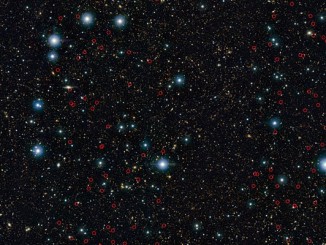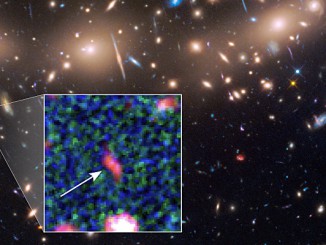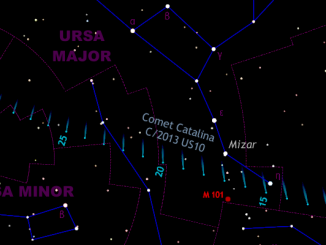The beautiful Whirlpool galaxy, also known as Messier 51, is a favourite target for amateur astronomers, two galaxies in the process of gravitationally merging, one a spectacular face-on spiral, the other a much more compact but still highly luminous starswarm. Both feature supermassive black holes in their cores. In this Andy Warhol-like series of images, a visible-light view at far left, captured by the Kitt Peak National Observatory’s 2.1-metre (6.8-foot) telescope, shows M51’s spiral arms and the dust lanes that obscure background stars. The second frame from left combines two visible-light wavelengths with infrared data from Spitzer, emphasising the dust lanes in the spiral arms. The third panel from left shows M51 in three wavelengths of infrared light (from 3.6 to 8 microns), highlighting reddish dust clouds mostly made up of carbon along with a bluish haze representing the blended light of billions of stars. The far-right panel extends the infrared view to a wavelength of 24 microns, highlighting areas where the dust is extremely hot. The bright reddish-white concentrations indicate areas where stars are in the process of forming and heating the surrounding environment.

The infrared views of M51b, the smaller companion, show a near total absence of the dust lanes seen in the lower spiral. The faint blue haze may reflect the blended light of stars ejected from both galaxies by the ongoing gravitational interaction.



